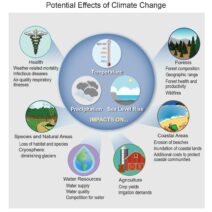America’s carbon footprint is a subject of considerable debate and scrutiny in today’s climate-conscious society. With increasing awareness of climate change and its dire consequences, understanding the magnitude of the U.S. contribution to global carbon emissions becomes imperative. But just how much does the U.S. really contribute to the carbon footprint of our planet? Let’s delve into this sometimes convoluted topic, challenging the common perceptions along the way.
Firstly, it is vital to grasp the sheer scale of emissions produced by the United States. The U.S. is historically one of the largest emitters of carbon dioxide (CO2) globally, contributing substantially to the phenomenon of climate change. While the country represents approximately 4% of the world’s population, it is responsible for around 15% of global greenhouse gas emissions. This statistic prompts an essential question: Is the economic prosperity of the United States, characterized by high energy consumption and industrial output, directly correlated with its carbon emissions?
To dissect this query, one must consider the various sectors contributing to the nation’s carbon footprint. The energy sector is by far the most significant culprit, accounting for nearly 75% of total emissions. The reliance on fossil fuels, particularly coal, oil, and natural gas, has cemented the energy industry’s position as the predominant source of carbon emissions. Despite advances in renewable energy, such as solar and wind, the transformation to a greener energy grid is still a work in progress.
The transportation sector, which includes cars, trucks, commercial air travel, and shipping, is another major contributor to emissions. Vehicles powered by gasoline and diesel emit large quantities of CO2. While there has been a concerted effort to develop electric vehicles (EVs) and enhance public transport systems, the shift is gradual, and the majority of vehicles on American roads continue to burn fossil fuels.
Industrial processes further exacerbate the situation, contributing about 22% of the U.S. carbon emissions. Manufacturing industries, ranging from cement and steel production to petrochemicals, utilize energy in ways that release significant amounts of CO2. Nevertheless, technological advancements and regulatory measures aimed at improving energy efficiency must be underscored, highlighting a potential for transformation.
Residential and commercial buildings account for an additional 12% of emissions, primarily due to energy consumption for heating, cooling, and electricity. The methods in which buildings are constructed and operated, alongside the types of energy sources utilized, play crucial roles in this sector. Increasing energy efficiency in buildings, employing sustainable materials, and utilizing renewable energy sources can substantially reduce this footprint, indicating a possible path towards sustainability.
Altogether, the United States’ contribution to global carbon emissions is daunting. Yet, it’s essential to contextualize this within the global arena. The U.S. is not alone on this front; developing countries are rapidly increasing emissions due to growing industrialization and urbanization. However, this raises an intriguing challenge: Should historically high-emission nations bear more responsibility for mitigating climate change compared to emerging economies?
As we ponder this dilemma, it becomes clear that addressing America’s carbon footprint requires a multifaceted approach. Public awareness and education play crucial roles in shifting societal behaviors. Encouraging individuals to reduce energy consumption, embrace sustainable practices, and advocate for greener policies can collectively make meaningful impacts. Furthermore, grassroots movements motivating climate action can lead to substantial changes at both local and broader governmental levels.
Legislation also plays a pivotal role in addressing carbon emissions. Policies like the Clean Air Act and initiatives aimed at reducing emissions standards for vehicles must be reinstated or expanded. International agreements, such as the Paris Accord, necessitate collaborative action. Yet, questions regarding effectiveness and implementation remain. How can the U.S. reconcile its economic ambitions with its ecological responsibilities?
Moreover, technology and innovation are fundamental components in the quest for a reduced carbon footprint. Carbon capture and storage (CCS) technology, although still in its nascent stages, shows promise in curbing emissions from energy generation and industrial processes. Research and investments in alternative energy sources must be prioritized to pave a sustainable pathway toward a carbon-neutral future.
In conclusion, the conundrum surrounding America’s carbon footprint is as multifaceted as it is critical. The challenge lies not just in recognizing the scale of emissions, but also in addressing the contributing factors and devising effective solutions. It begs a playful yet serious question: Can the land of innovation and opportunity emerge as a beacon of sustainability in an era increasingly defined by climate urgency? The prospects are promising, yet they require collective effort, ingenuity, and resolve. As individuals, communities, and nations grapple with these pressing issues, the imperative to act has never been clearer. The journey toward a sustainable future is fraught with challenges, but the rewards—an inhabitable planet for future generations—are immeasurable.








